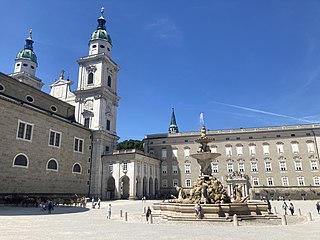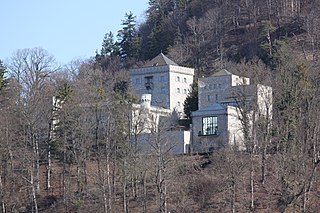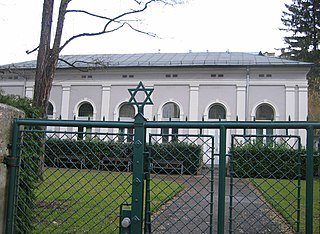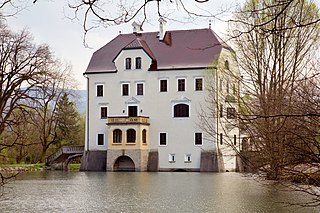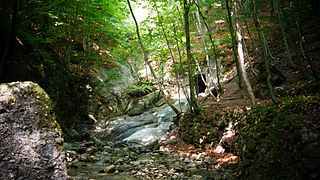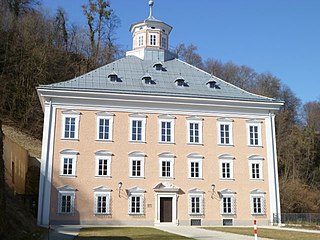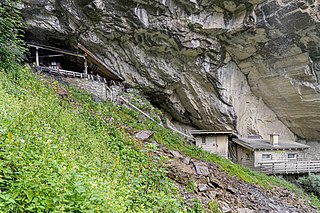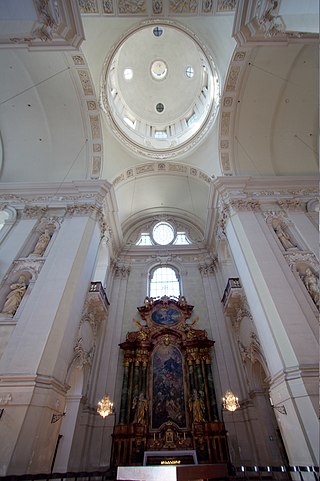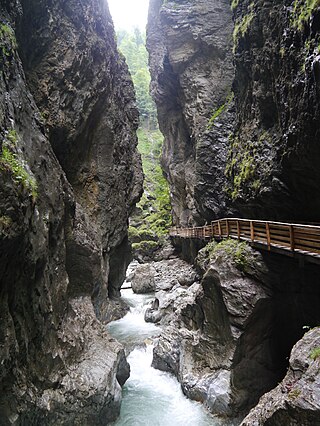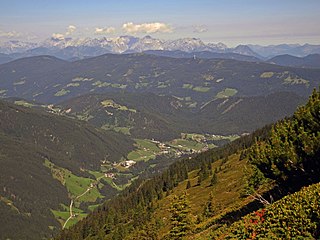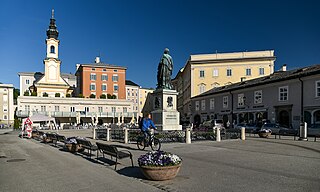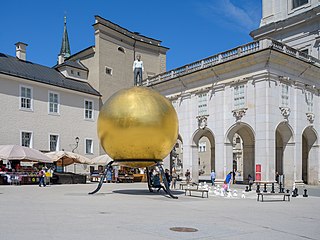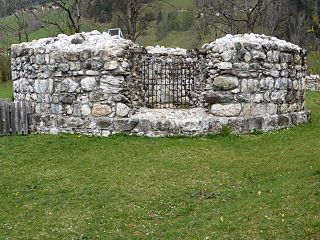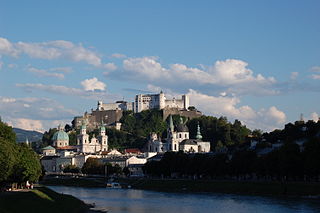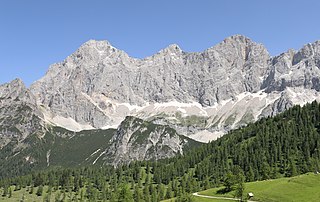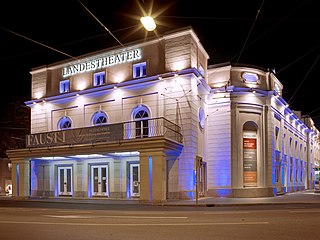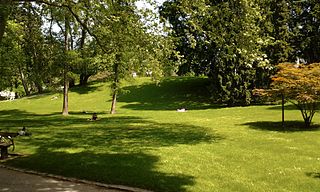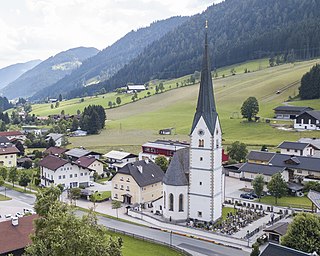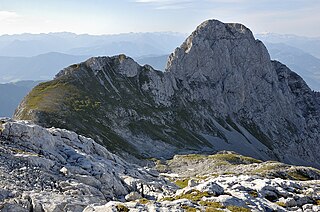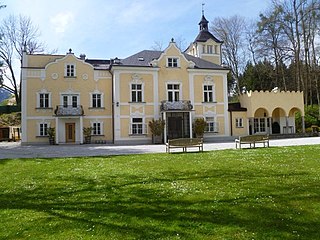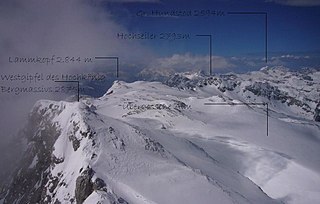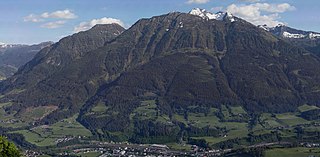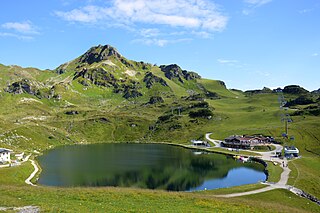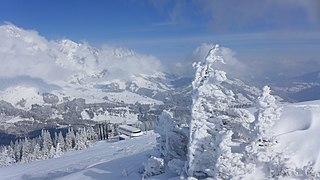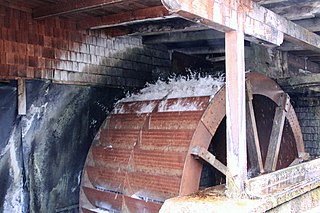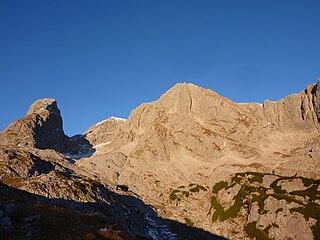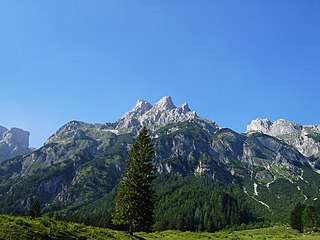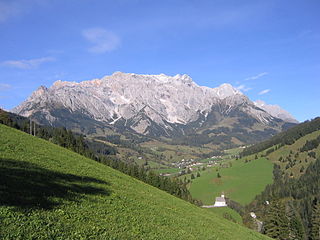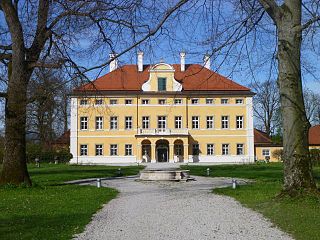61 Sights in Salzburg, Austria (with Map and Images)
Legend
Premium Sights
Book tickets, guided tours and activities in Salzburg.
Guided Free Walking Tours
Book free guided walking tours in Salzburg.
Welcome to your journey through the most beautiful sights in Salzburg, Austria! Whether you want to discover the city's historical treasures or experience its modern highlights, you'll find everything your heart desires here. Be inspired by our selection and plan your unforgettable adventure in Salzburg. Dive into the diversity of this fascinating city and discover everything it has to offer.
Sightseeing Tours in SalzburgActivities in SalzburgThe Mirabell Gardens are the gardens of Mirabell Palace in the city of Salzburg in Austria, in the Right Old Town. It is one of the most famous tourist destinations in the city. It includes the large garden parterre with the adjacent lime grove to the south the small garden parterre with the bosquet adjoining to the south the theatre garden (Heckentheater) the dwarf garden the Bastion Garden (Water Bastion) the Orangery and the Rose Garden
Salzburg Cathedral is the seventeenth-century Baroque cathedral of the Roman Catholic Archdiocese of Salzburg in the city of Salzburg, Austria, dedicated to Saint Rupert and Saint Vergilius. Saint Rupert founded the church in 774 on the remnants of a Roman town, and the cathedral was rebuilt in 1181 after a fire. In the seventeenth century, the cathedral was completely rebuilt in the Baroque style under Prince-Bishop Wolf Dietrich von Raitenau to its present appearance. Salzburg Cathedral still contains the baptismal font in which composer Wolfgang Amadeus Mozart was baptized.
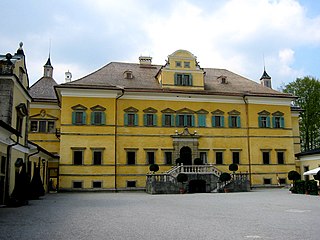
Hellbrunn Palace is an early Baroque villa of palatial size, near Morzg, a southern district of the city of Salzburg, Austria. It was built in 1613–19 by Markus Sittikus von Hohenems, Prince-Archbishop of Salzburg, and named for the "clear spring" that supplied it. Hellbrunn was only meant for use as a day residence in summer, as the Archbishop usually returned to Salzburg in the evening; therefore, there is no bedroom in Hellbrunn.
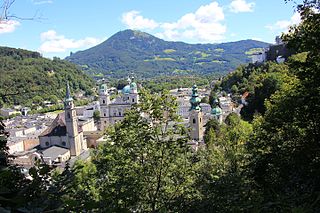
The Gaisberg is, at 1,287 meters (4,222 ft) above sea level, a mountain to the east of Salzburg, Austria. It belongs to Salzkammergut Mountains, a range of the Northern Limestone Alps. The mountain is one of the Salzburg Hausberge, a recreational area offering views over the city and the Berchtesgaden Alps in the west. On the top of the mountain is the widely visible Gaisberg Transmitter.
5. Georgskirche
Hohensalzburg Fortress is a large medieval fortress in the city of Salzburg, Austria. It sits atop the Festungsberg mountain at an altitude of 506 m. It was erected at the behest of the prince-archbishops of Salzburg. The fortress is 250 m (820 ft) long and 150 m (490 ft) wide making it one of the largest medieval castles in Europe.
6. Stiftskirche Sankt Peter
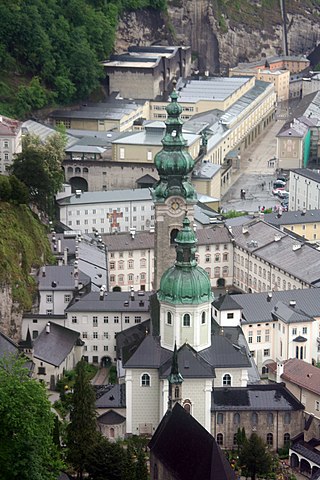
The Collegiate Church of St. Peter is the abbey church of the Benedictine Archabbey of St. Peter in the middle of the St. Peter district directly at the foot of the Mönchsberg in the city of Salzburg. The church was consecrated to St. Peter the Apostle. The entire complex of St. Peter's Abbey is a listed building (list entry). After a year of extensive renovation work, the collegiate church was reopened on 22 Sept. 2019 with the consecration of a new altar by the Archbishop of Salzburg and the Archabbot of St. Peter.
7. St. Elisabethkirche
Elisabeth-Vorstadt is a district of the statutory city of Salzburg. It is located between the Salzach River and Salzburg's main train station and is partly urban, partly characterized by residential villas.
8. Markuskirche
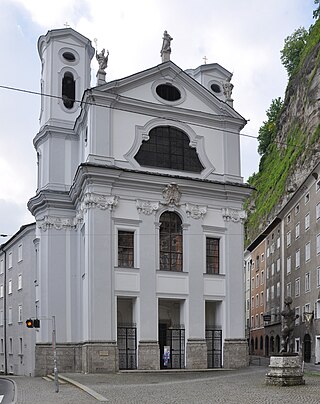
St. Mark's Church is located in Gstättengasse on Ursulinenplatz in Salzburg's old town. The patronage is on St. Mark's Day. Since it was the monastery church of the Ursulines until 1957, it is also popularly called the Ursuline Church. The Roman Catholic Baroque church was made available to the Ukrainian Greek Catholic community in 1999.
9. St. Erhardkirche
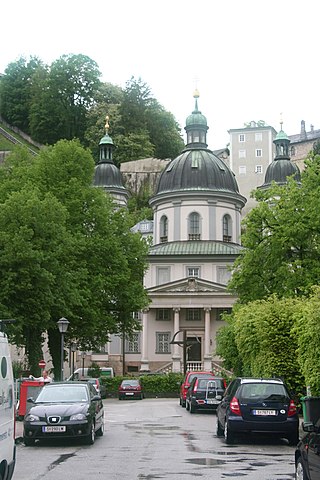
The Roman Catholic Erhard Church, actually Parish Church of St. Erhard or Parish Church of St. Erhard, also Parish Church of St. Erhard Salzburg-Nonntal, is a church building owned by the city of Salzburg in the district of Nonntal.
10. Kajetanerkirche
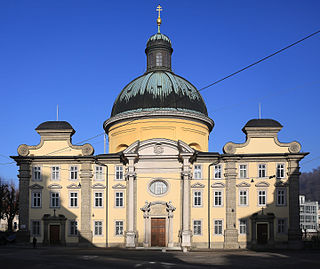
The Roman Catholic Kajetanerkirche is located on Kajetanerplatz, which is located in the Kaiviertel, in the south of Salzburg's old town. It is named after Saints Maximilian and Cajetan, and the patronage is celebrated on St. Maximilian's Day, 12 October. It had been built as a monastery church of the Theatines, who had operated a Theatine monastery there from 1685 to 1808, by Archbishop Max Gandolf Kuenburg and consecrated on 31 October 1700 by Johann Ernst Graf Thun.
11. Zwergelgarten
The Dwarf Garden is part of the Mirabell Gardens and was originally called Pigatlgarten in Salzburg, later also Pagodngarten. As far as is known, it is the oldest dwarf garden in Europe. The dwarfs were created after 1690, like essentially the entire Mirabell Gardens, according to plans by Johann Bernhard Fischer von Erlach.
12. Fritzerkogel
The Fritzerkogel is a mountain in the Tennengebirge in the northern Limestone Alps, Austria. With its elevation of 2,360 metres (7,740 ft), is one of the higher peaks in the mountain range. Seen from the north it stands out as a relatively isolated, broad summit block, whose mighty rock faces and steep, rugged, rocky flanks (Schrofen) fall away on all sides. Its 1,200-metre-high (3,900 ft) south cliff face is impressive and makes it a striking two-thousander.
13. Richterhöhe

At 507 m, the Richterhöhe is the highest elevation of the Mönchsberg in Salzburg. The two kennels in the southwest of the Mönchsberg, the upper Falkenzwinger and the lower Bertholdszwinger are part of the historic fortifications of the mountain. They date mainly from the Middle Ages, but are sometimes erroneously called Lodron Zwinger or Paris-Lodron Zwinger after Prince-Archbishop Paris von Lodron (1586–1653). In 1906, the hill of the Upper Zwinger was named Eduard-Richter-Höhe in honour of the geographer, historian and alpinist Eduard Richter (1847–1905), and a monument was erected there in 1907.
14. Mozart's Birthplace
Mozart's birthplace is the birthplace of Wolfgang Amadeus Mozart at No. 9 Getreidegasse in Salzburg, Austria. The Mozart family resided on the third floor from 1747 to 1773. Mozart himself was born here on 27 January 1756. He was the seventh child of Leopold Mozart, who was a musician of the Salzburg Royal Chamber.
15. Rosenkranzweg Maria Plain (IV)
The Secret Columns on the way to Maria Plain are a series of a total of 16 wayside shrines that lead from the Austrian city of Salzburg to the north of Plainberg, which is located in the municipality of Bergheim. They were laid out in 1705 by an unknown donor and form an approximately four-kilometre-long pilgrimage route to the church of Maria Plain, marked without a specific name. The stone columns I to XV are decorated with oil paintings depicting the 15 mysteries of the Rosary; the series concludes with a votive column with the history of its origins. The secrecy columns had hardly been maintained over time, the pictures had partly disappeared or had come close to decay. Private rescue operations at the beginning of the 20th century and in the 1980s were able to save the row of columns from destruction.
Wikipedia: Geheimnissäulen auf dem Weg nach Maria Plain (DE)
16. Relief, Heiliger Sebastian
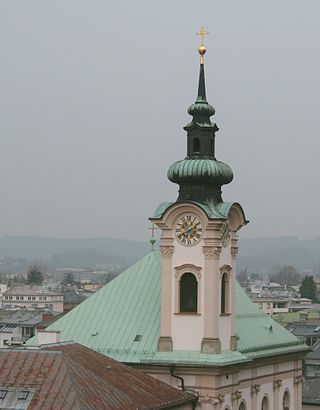
The Roman Catholic St. Sebastian's Church is a Baroque church in Salzburg, Germany. The church is structurally connected to the Sebastian Cemetery and the St. Sebastian Brothers' House. The patronal feast is celebrated on 20 January, Sebastiani.
17. Residenzbrunnen
Residenzplatz is a large, stately square in the historic centre (Altstadt) of Salzburg in Austria. Originally named Hauptplatz, it is now named after the Alte Residenz of the Prince-Archbishops of Salzburg. It is one of the city's most popular places to visit.
18. Michaelskirche
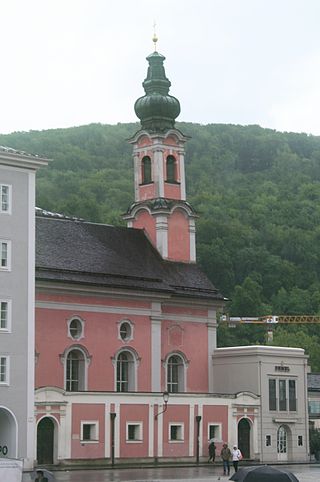
The Roman Catholic St. Michael's Church, a branch church in honour of the Archangel Michael, belongs to St. Peter's Abbey and is the oldest church in the city of Salzburg that still exists today. It is located between the Waagplatz and the Residenzplatz in Salzburg's old town.Before the middle of the 17th century, the long transverse building on the east side of the church was a so-called Schranne, a common point of sale, here the baker for bread. The Trakl family later lived on the first floor, Georg Trakl spent his childhood and youth here, while his father Tobias Trakl ran an ironmongery shop on the ground floor. Since 1925, the property with the address Waagplatz 3 has been used as a café.
19. Sankt Blasiuskirche
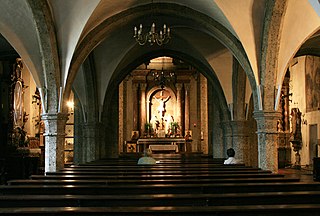
The former Bürgerspitalkirche and today's Roman Catholic parish church of St. Blasius is located in Salzburg directly on the Mönchsberg between the western end of Getreidegasse and the old Gstättentor in the old town. It was built as a hospital church. Together with the Holy Cross Minster in Schwäbisch Gmünd, it is the oldest hall church in southern Germany. The church is part of the UNESCO World Heritage Historic Centre of the City of Salzburg.
20. Schloss Neuhaus
Neuhaus Castle is located on the Kühberg in the Gnigl district of the city of Salzburg and, together with the Gnigler Schanze, used to be part of a fortification that stretched across today's Neuhauserstraße to the Kapuzinerberg and the city of Salzburg.
21. Sankt Andrä Kirche
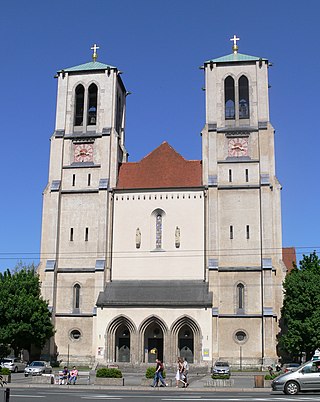
The Roman Catholic St. Andrew's Church is a large parish church in Salzburg's so-called Neustadt and belongs to the city deanery. It is dedicated to the Apostle Andrew, and the patronal feast is celebrated on 30 November (St. Andrew's Day). The original church of the parish, which had existed since 1811, stood at Linzer Gasse 1.
22. Herz Jesu Heim Kirche
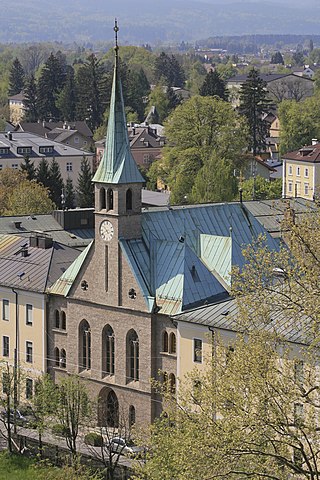
The Sacred Heart Asylum Church is structurally integrated into the Sacred Heart Home at Hübnergasse No. 5–7 in the Riedenburg district of the municipality of Salzburg. The Roman Catholic Church of the Cooperative of the Daughters of Christian Love of St. Vincent de Paul, dedicated to the Heart of Jesus, belongs to the Salzburg City Deanery of the Archdiocese of Salzburg. The church is a listed building (list entry).
23. Israelitische Kultusgemeinde Salzburg
The Salzburg Synagogue is a Jewish prayer house in the state capital of Salzburg in Austria and has existed since 1901. After the Second World War, it was initially adapted by the returned Salzburg faith and inmates of Jewish DP warehouses in the state of Salzburg and in the years 1967/1968 Financial funds are completely repaired again. In the course of the repair work, the building was expanded by a women's entrance. A ritual bath (Mikwe) was built on the east side. The latter is the only ritual bathroom of a Jewish community in Austria outside of Vienna. The administrative space of the cultural community is also housed in the east wing of the synagogue. The synagogue also follows the Orthodox rite today, which provides for a separation of the sexes in the prayers. Today, the Israeli cultural community of Salzburg has around 100 members, and since President Elie Rosen took office in January 2023, prayers take place regularly in the synagogue on Friday evenings and Saturday morning.
24. Schloss Freisaal
Schloss Freisaal is nestled in the grassland belt in the south of the provincial capital Salzburg in Austria. The Faculty of Natural Sciences of the University of Salzburg is located in the immediate vicinity. The castle is located in the middle of a small pond.
25. Aigner Park
The Aigner Park is located at the foot of the Gaisberg in the Salzburg district of Aigen, next to Aigen Castle and the parish church of Salzburg-Aigen. It is a listed building and was declared a protected part of the landscape in 1980. The park, with its paths, viewpoints, grottos and waterfalls, is an important monument to early 19th-century garden art.
26. Edmundsburg
The Edmundsburg is located above the Salzburg Festival Halls on the Mönchsberg. The three-storey, cubic building was built between 1694 and 1696 on behalf of Abbot Edmund Sinnhuber of St. Peter's Abbey. The letters above the entrance portal refer to the builder: Edmundus Abbas Sancti Petri. It is now used by the University of Salzburg.
27. Entrische Kirche
The Entrische Kirche is a show cave near Klammstein in the Gastein Valley. It is one of the most important caves on the edge of the Hohe Tauern and the largest natural cave in the Salzburg Central Alps. It has large halls and wonderful stalactite and sinter formations. The cave is over 2500 meters long, the temperature is always around 6 degrees Celsius. The cave name "Entrische Kirche" was first mentioned in a document in 1428.
28. Kollegienkirche
The Kollegienkirche in Salzburg, Austria, is the church of the University of Salzburg. It was built in Baroque style by Johann Bernhard Fischer von Erlach. Dedicated to the Immaculate Conception, it is part of the UNESCO World Heritage Site Historic Centre of Salzburg. It is now both the parish church of people connected to the university and a venue of the Salzburg Festival.
29. Liechtensteinklamm
Liechtensteinklamm is a gorge with walls up to 300m high, located in the Austrian Alps 50 km south of Salzburg. It is around 4 km long and is named after Johann II of Liechtenstein who had the walkways installed in 1875.
30. Rossbrand
The Rossbrand is a 1770 m high mountain in the Salzburg Slate Alps and is located north of Radstadt in the Austrian state of Salzburg. Directly below the summit is the private Radstädter Hütte and a little north at an altitude of 1720 m the Roßbrandhütte of the Friends of Nature Austria.
31. Großes Festspielhaus
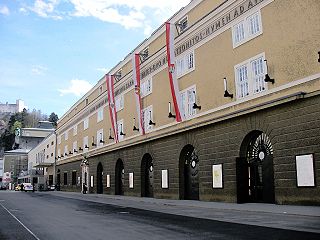
The Großes Festspielhaus, in its current form, was designed by architect Clemens Holzmeister in 1956 for the Salzburg Festival in Austria. It was inaugurated on 26 July 1960 with a performance of Richard Strauss' Der Rosenkavalier conducted by Herbert von Karajan, who also worked with Holzmeister on aspects of the building's design. The Large Festival House includes office space and tunneling into the Mönchsberg as well as a 2,179-seat performance space adaptable for both scenic and non-scenic events and acoustically scalable down for piano and song recitals. The stage is one of the widest in the world, at 100 metres (330 ft). The auditorium is square. Access from the street to the lobby is through five bronze doors, above which is inscribed a Latin motto by Thomas Michels: SACRA CAMENAE DOMUS / CONCITIS CARMINE PATET / QUO NOS ATTONITOS / NUMEN AD AURAS FERAT.
32. Mozart Denkmal
Mozartplatz, formerly known as Michaelsplatz, is a square in the historic centre of Salzburg in Austria. In the centre of the square is a statue in memory of the composer Wolfgang Amadeus Mozart, who was born in the city and after whom the square is now named.
33. Karolinenhöhe
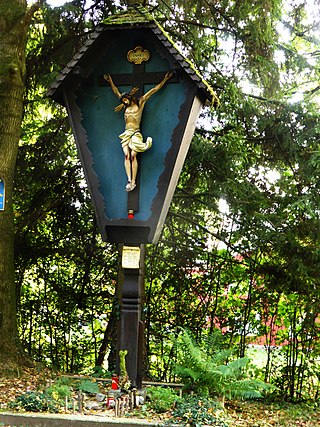
At 506 metres, the Karolinenhöhe is the highest elevation of the Mönchsberg in the city of Salzburg. It was named after Karoline Augusta, the fourth wife and widow of Emperor Franz I, who is known in Salzburg as a patron in the social and cultural sphere. From this vantage point, it used to be possible to look south at the Residenz, the residence of the Empress Dowager, and north-west towards Bavaria, the country of origin of Karoline Augusta as the daughter of King Maximilian of Bavaria. Today, this is only possible to a limited extent due to the high tree cover.
34. Sphaera
The Sphaera is a work of art in the old town of Salzburg, consisting of a male figure, standing on a huge golden ball on the chapter square, and the "woman in the rock", a female figure in a rock crevice in the Toscaninihof.
35. Volkskunde Museum Monatsschlössl Hellbrunn
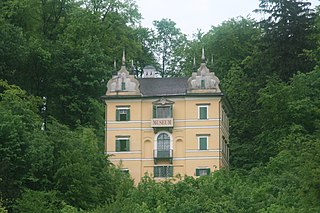
The Monatsschlössl, also Waldemsschlösschen, is a 17th-century hunting lodge located on the Hellbrunner Berg in the park of Hellbrunn Palace in the south of the Austrian city of Salzburg, which now houses a museum.
36. Wagrain Castle
Wagrain Castle is the ruin of a hilltop castle at 840 m above sea level on the still so-called castle hill of the municipality of Wagrain in the district of St. Johann im Pongau in the province of Salzburg. The castle protected the transition over the Wagrainer Höhe from the Salzach Valley to the Enns Valley.
37. Festungsberg
Festungsberg is a mountain in the city of Salzburg in Austria, which rises to an elevation of 542 metres (1,778 ft). It is the site of the Hohensalzburg Fortress, which towers over Salzburg's historic city centre to the north, and forms part of the city's UNESCO World Heritage Site.
38. Torstein
At 2948 m above sea level, the Torstein is the second highest mountain in the Dachstein Mountains. It lies on the border between the Austrian provinces of Salzburg and Upper Austria on the southern edge of the Dachstein plateau. Its south face is the highest wall in the entire Dachstein massif with about 1000 meters of altitude. According to literature, the mountain is the mightiest elevation of the massif.
39. Salzburg State Theatre
The Salzburg State Theatre is a theatre situated in Salzburg, Austria, a venue for opera, theatre, and dance, contemporary and older works, with resident companies of actors, singers and dancers. The theatre presents approximately 400 performances each season, from September to June. The main theatre building is located next to the Mirabell Gardens and seats an audience of 707. The staff consists of 340 people originating from 35 different countries.
40. Kurgarten
The Kurgarten in the city of Salzburg is a park-like garden in the district of Neustadt (Andräviertel). It adjoins the famous Mirabell Gardens to the north. The English landscape garden is also known for its exotic old trees.
41. Franziskaner Kirche
The Franciscan Church is one of the oldest churches in Salzburg, Austria. The church is located at the intersection of Franziskanergasse and Sigmund-Haffner-Gasse opposite the Franciscan Friary in the Altstadt section of the city. The first church on this site was erected in the eighth century. Between 1408 and 1450, a Gothic choir replaced the Romanesque choir. A slender Gothic tower was added between 1468 and 1498. The church was dedicated to the Virgin Mary and served as the parish church until 1635. It was ceded to the Franciscan Order in 1642. Johann Bernhard Fischer von Erlach redesigned the church interior in the baroque style in the eighteenth century.
42. Pfarrkirche St. Martin
The parish church of St. Martin is a Roman Catholic church in the parish of St. Martin am Tennengebirge in the district of St. Johann im Pongau in the province of Salzburg, the patronal feast is celebrated on 11 November. It belongs to the deanery of Altenmarkt of the Archdiocese of Salzburg.
43. Haus für Mozart
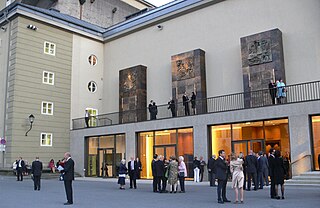
The Haus für Mozart, or House for Mozart, is a 1,500-seat theatre of the Salzburg Festival in the city of that name in Austria. It was established in 1925 when horse stables were converted into a venue for the mystery plays that were a main facet of the five-year-old festival, becoming the festival's first dedicated performance space, its Festspielhaus. This name it retained through three rebuildings until, in 1960, the larger Neues Festspielhaus opened next door, whereupon it took the name Altes Festspielhaus, or Old Festival-House. But three seasons later, to end confusion in the minds of visitors unaware of the history, both theatres were renamed for their sizes, and the smaller was now the Kleines Festspielhaus. For forty-two seasons, through 2004, the nomenclature was settled. Then the theater was closed for its fourth gutting and reconstruction. It gained its current name upon reopening in 2006 as the festival's principal theatre for Mozart and Rossini operas as well as Baroque stageworks.
44. Hochthron
With an altitude of 2363 m above sea level, the Werfener Hochthron is the third highest and probably one of the most striking mountains in the Tennengebirge in the northern Limestone Alps. It rises on the southern edge of the extensive karst plateau and breaks off on all sides with steep rock faces. That is why it is also one of the most famous and popular mountains for climbers in the Tennengebirge. The large difference in altitude between the summit and Werfen in the valley of the Salzach, which is around 1800 metres, is remarkable. The panorama from the summit cross is comprehensive and allows a view over the entire Pongau and the Hochkönig towering opposite.
45. Maria Theresien Schlössl
The Maria-Theresien-Schlössl is located in the Salzburg district of Morzg or Hellbrunn. The name of the building refers to the mother of the builder, the Uhlan cavalry captain Josef Ritter von Lommer (1864–1902), whose name was Maria Theresa.
46. Übergossene Alm
The Übergossene Alm is the summit region of the Hochkönig (2,941 m) in the Berchtesgaden Alps. It contains the remains of a glacier that used to cover almost the entire summit plateau; in 1888 around 5.5 km2 of the plateau was covered by an ice sheet. Since then the glacial surface has melted until it now covers just 1.5 km2 and the glacier has split into three, small crevasse-free areas. The name of the glacier goes back to a local legend.
47. Heukareck
The Heukareck is the local mountain of Schwarzach im Pongau and belongs to the municipality of Sankt Veit im Pongau. The 2100 m high mountain is located in the south of Schwarzach and is a hilltop north of the Höllwand and the end point of the Gamskarkogel ridge in the Ankogel Group.
48. Eishöhle
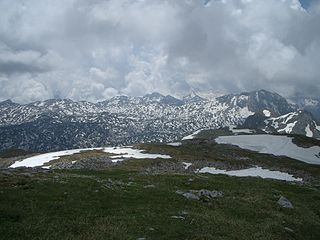
The Hagen Mountains are a subrange of the Berchtesgaden Alps. They lie mainly in the Austrian state of Salzburg, the western quarter is in the Bavarian county of Berchtesgadener Land. The steep western flanks of the Hagen lie in Bavaria and drop 1,700 metres (5,580 ft) in height to the basin of the Berchtesgadener Königssee.
49. Seekarspitze
The Seekarspitze is a 2350 m high mountain in the Schladminger Tauern near Obertauern in the province of Salzburg. At the foot of the Seekarspitze lies the Obertauern ski area. The ascent of the mountain is possible from different sides, the easiest and shortest route leads from Obertauern to the summit, as the village is already over 1700 m. There are several lakes at the foot of the Seekarspitze, the largest being the Grünwaldsee and Hundsfeldsee.
50. Schneeberg
The Schneeberg is a 1938 m high, double-peaked mountain in the Dienten Mountains. It rises west of Mühlbach am Hochkönig in the province of Salzburg. The main summit is called the Dientner Schneeberg, the 17 metre lower secondary summit is called the Mühlbacher Schneeberg and is located about 400 metres to the northeast.
51. Stiftsmühle St. Peter
The St. Peter's Abbey Bakery and Mill is an old bakery and water mill. It is located on the Almkanal in the Mühlenhof between Kapitelplatz and St. Peter's Cemetery in the old town of Salzburg. It belongs to St. Peter's Abbey.
52. Museum der Moderne
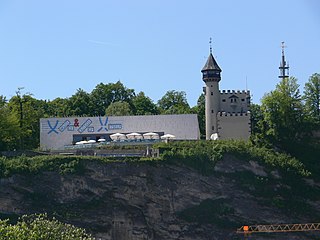
The Museum der Moderne Salzburg has two buildings at two different locations in Salzburg, Austria. The Rupertinum in the old town for new artistic concepts opened in 1983 and the Museum on the Mönchsberg for modern art in a contemporary setting opened in 2004.
53. Georgskirche
The Roman Catholic parish church of Goldegg im Pongau is located in the municipality of Goldegg im Pongau in the district of St. Johann im Pongau in the province of Salzburg. The parish church, which is under the patronage of St. George, belongs to the deanery of St. Johann im Pongau of the Archdiocese of Salzburg. The church is a listed building (list entry).
54. Awilda: Monumentaler Marmorkopf für Salzburg
Awilda is a marble sculpture in the Dietrichsruh in the complex of the University of Salzburg in the old town of Salzburg. It was created as part of the "Kunstprojekt Salzburg" in 2010 by the Catalan artist Jaume Plensa.
55. Gurken
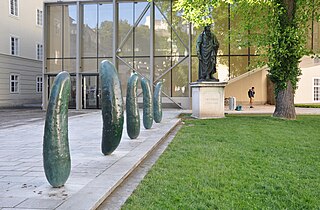
Cucumbers is a work of art consisting of five individual sculptures in the Wilhelm-Furtwängler-Garten in the old town of Salzburg. It was created as part of the "Salzburg Art Project" in 2011 by the Austrian artist Erwin Wurm.
56. Südwestlicher Schoberkopf
The Schoberköpfe are several ridge-shaped peaks, arranged along the eastern edge of the Hochkönig plateau in the Berchtesgaden Alps, and which lie in a semi-circular arc that opens towards the east facing the Salzach valley:Southwestern Schoberkopf Eastern Schoberkopf Teufelskirche, also called the Teufelskirchl (2,520 m), a rock tower in front of the Eastern Schoberkopf.
57. Pfarrkirche
The Roman Catholic parish church of Wagrain is located on the church floor in the southeast of Wagrain Markt in the market town of Wagrain in the district of St. Johann im Pongau in the province of Salzburg. The parish church, which is under the patronage of Saint Rupert of Salzburg, belongs to the deanery of St. Johann im Pongau of the Archdiocese of Salzburg. The church is a listed building (list entry).
58. Eiskogel
The Eiskogel is one of the best known peaks in the Tennen Mountains (Tennengebirge) which are part of the Northern Limestone Alps in the state of Salzburg. On its south and west sides the mountain has rock faces up to 1,000 metres high. By contrast, to the north and east it descends relatively gently down grass and schrofen slopes to the broad plateau of the Tennen Mountains.
59. Waggerl Haus Museum
The Waggerlhaus, officially Waggerl Haus, in Wagrain was the home of the poet Karl Heinrich Waggerl (1897–1973) for over 50 years and has served as a museum since 1994. The 18th-century building is a listed building.
60. Hochkönig
With an altitude of 2941 m above sea level, the Hochkönig is the highest mountain range in the Berchtesgaden Alps. The main summit, which is also called Hochkönig, towers over all mountains within a radius of about 34 kilometers. With a notch height of 2181 m, the Hochkönig is one of the most geographically prominent mountains in the Alps, surpassed only by Mont Blanc, Großglockner, Finsteraarhorn, Wildspitze and Piz Bernina.
61. Schloss Frohnburg
The Frohnburg is located at Hellbrunner Allee No. 53 in Salzburg in the Hellbrunn Landscape Garden. It was also called Grafenauerhof or Kuenburg Castle in history and is a typical Salzburg country castle.
Share
Disclaimer Please be aware of your surroundings and do not enter private property. We are not liable for any damages that occur during the tours.
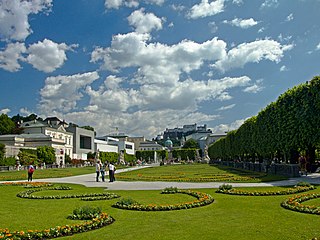
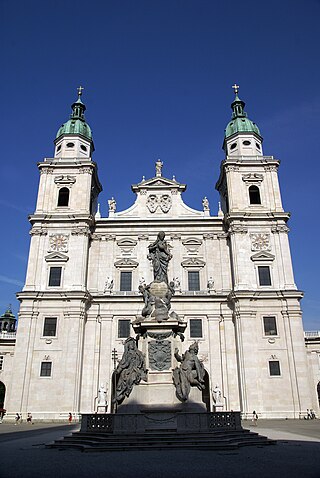
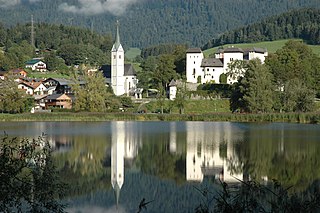
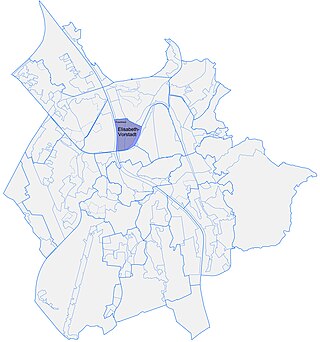
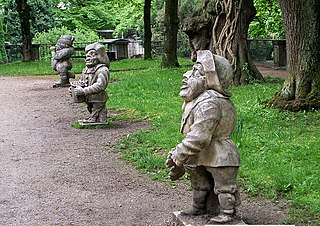
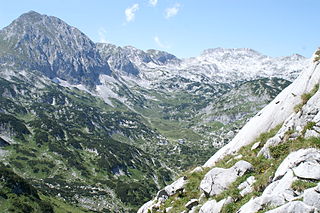
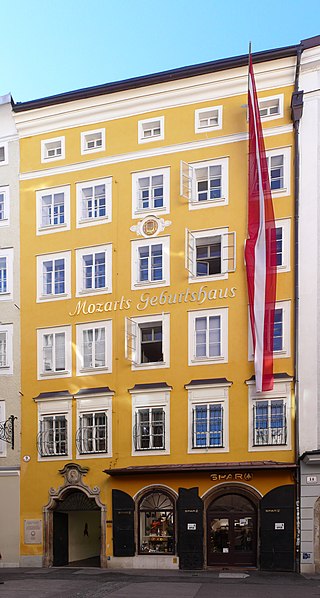
.jpg)
